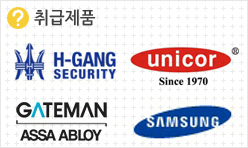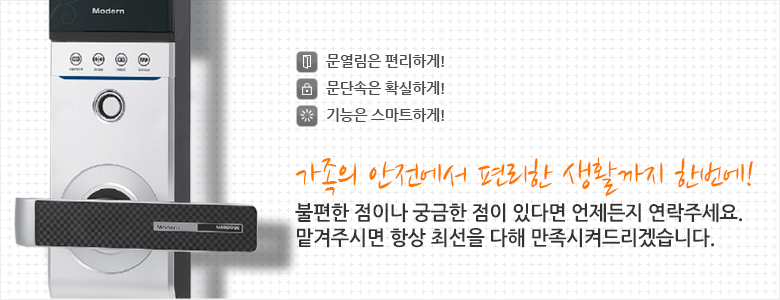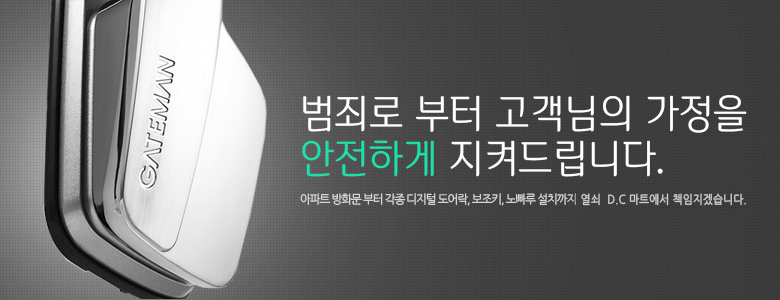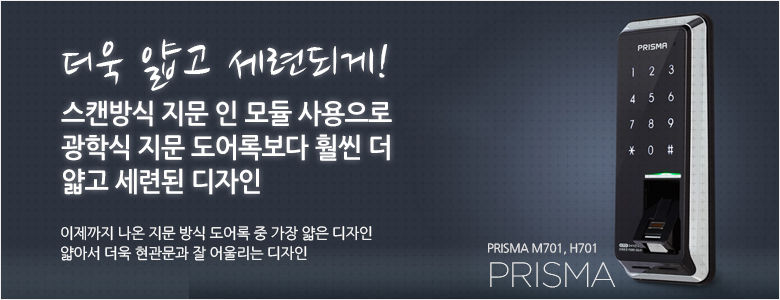A Glimpse Into Cleaning Robots's Secrets Of Cleaning Robots
페이지 정보
작성자 Carlton 작성일24-12-16 16:09 조회5회 댓글0건본문
연락처 :
주소 :
희망 시공일 :
How to Get the Most From Cleaning Robots
Cleaning robots are changing the way organizations manage their workplaces. They provide a range of capabilities that can be tailored to different industries. For the best inexpensive robot vacuum robot vacuum for vinyl plank floors (visit my website) results from these intelligent machines look for models that have reliable connectivity to the internet and remote troubleshooting.
Choose a model that supports spot or zone cleaning to clean messy areas on demand. To avoid hair getting tangled it's best to regularly remove the brushes and any edge or corner brush from your robot vacuum.
Autonomous Cleaning Robots
Autonomous cleaning robots can sweep, vacuum and clean spaces without constant human intervention. They also adapt to different environments and take care of tasks that would be too much for humans to handle. Robotic cleaners can save time and money because they allow your staff to focus on other important tasks.
While the most popular type of autonomous cleaning robot is a household vacuum or robotic floor scrubber there is a variety of professional-grade machines that provide far more features than their consumer counterparts. Industrial-grade robots, for instance, can clean large warehouse floors as well as other areas that are prone to soiled. They can be programmed to clean up areas that humans can't go, using wall-climbing technology and other tools to ensure safe operation in tight areas.
The majority of these cleaning robots come with a variety of sophisticated sensors, including cameras and mapping software that allow them to draw out rooms and avoid obstacles. Some even employ AI to learn how they're used and adjust in accordance with the needs of the user, increasing efficiency over time.
These intelligent systems can also be connected to other smart devices, resulting in an even more efficient and connected facility. These robots are more cost-effective and sustainable since they consume less energy. A lot of these robots have been designed to work in conjunction with other automated systems like building automation and material handling systems.
It's worth investing, whether you need one unit or a group of units, in this innovative technology to increase the productivity and efficiency of facility operations. The decreased need for manual labor, improved operator safety, and the longer life of cleaned surfaces will help your investment pay off fast.
This pandemic provides a great opportunity to explore how you can incorporate intelligent cleaning robots in your routine maintenance routine. This is a great way to show your employees that you're advancing your cleaning program, and also to reduce the chance of contracting. You'll get the most value for your money when you select the best autonomous robots.
Robotic Vacuums
Sensors assist robot vacuums to navigate their home and detect obstacles. Some models have infrared sensors, similar to the ones found in self-driving cars that create a virtual map of the home. Other models use camera-based sensors to identify objects and eliminate them, resulting in a clean and efficient cleaning with less user intervention. These sensors allow you to select a specific area of your home to be used for cleaning using the onboard controls or a smartphone app. Certain models let you control the robot with voice commands, allowing you to choose to clean one room or even send it to encircle your walls for a perimeter cleaning.
Robotic vacuums are great for removing dirt from carpets and rugs but they're not able to penetrate pet hair clumps, or other mess which require more than a quick sweep. They also don't pick up dust that is close to baseboards and other edges, which requires a more thorough cleaning than you would receive with a standard upright or canister vacuum.
When choosing a robot vacuum, choose one that has powerful suction and brushes designed to collect dirt from surfaces. The most effective models come with features like object identification technology, customizable settings and pet mode. Go through the manual to determine the recommended maintenance intervals. Most models only require that you empty the trash, and wipe down the wheels, sensors, and charging contacts.
Most of the advanced robot automatic vacuum cleaner and mop models we test integrate with smart home systems, allowing you to control them with smartphones or digital voice assistants such as Amazon Alexa and Google Assistant. You can plan or start a cleaning session and set the timer to complete the entire area of your home while you're away. Some robot vacuums can pause cleaning sessions to recharge and then resume where they left off. However, many robot vacuums aren't as effective as traditional vacuums and in tight spaces and their small sizes make it difficult to move around furniture.
Robotic Floor Scrubbers
Contrary to vacuum cleaners that are used to eliminate debris from floors and carpeting robotic floor scrubbers make use of water to dislodge and agitate dirt and grime off of hard surface flooring. They can be self-propelled or operated by an operator. Modern models can detect and navigate obstacles and reduce the time needed to clean. Some models incorporate an intelligent water management system, which recycles the same water for hours.
A robotic cleaner can be a fantastic way to increase the efficiency of establishments with a low staffing level or high turnover rates. Staff can concentrate on other important tasks when robots are working. In a hospital, this might mean that surfaces that are frequently touched, like doors, countertops and bathrooms cleaned and disinfected. In the retail store, it could be helping customers find what they need and avoiding frustration with smudges on windows and glass.
Robotic floor scrubbers are programmed to operate at specific times and their cleaning route can be tailored with various modes to meet unique cleaning needs. They can be monitored in real time, allowing managers the ability to monitor their progress via mobile applications or web portals. Certain manufacturers collect these kinds of data and make them accessible to users to help them identify areas to improve.
The most basic models, which could cost as low as $100, include only a single reservoir of water, and a static, swiffer-like pad that sprays and wipes when it collects dirt. More sophisticated models come with two rotating pads that brush and sweep the floor, with self-emptying docks for dumping dirty water and refilling with fresh cleaning solution. The fanciest robot mop-vacs can even differentiate between types of flooring and return to their docks mid-clean to dump unused cleaning solution and clean their brushes. They then refill with fresh cleaning solution.
All kinds of robots are connected to a cloud-based system that gives detailed reports on their performance usage, use, and any anomalies. This information can be accessed by the facility manager, employees, and others who have been granted remote access to the system.
Robotic Floor Mop
 A cheap robot vacuum cleaner mop can help you to keep your floors clean without having to get them in touch. These robots will scrub your tile and wood floors in between deep cleaning sessions and will keep dirt, pet hair and other debris from your floors. They can be used on all sealed types of flooring, including hardwood, laminate and vinyl. Most robot mops are set to clean at predetermined intervals. You can use the app to change cleaning settings, set up an agenda or keep track of when the mop requires maintenance, such as changing the filter.
A cheap robot vacuum cleaner mop can help you to keep your floors clean without having to get them in touch. These robots will scrub your tile and wood floors in between deep cleaning sessions and will keep dirt, pet hair and other debris from your floors. They can be used on all sealed types of flooring, including hardwood, laminate and vinyl. Most robot mops are set to clean at predetermined intervals. You can use the app to change cleaning settings, set up an agenda or keep track of when the mop requires maintenance, such as changing the filter.
Robotic floor mops typically require a separate tank of water to mop. This can be difficult to fill and empty when the pads become dirty. Find a model with self-emptying docks or ones that is easily empty when needed.
Some models can also be vacuumed however, you may have to empty the dust bin after each cleaning session (unless it comes with a self-emptying base). If your floors are especially dusty, letting the machine sweep first, and then mop might produce better results.
Most robot mops require tap water, but some allow you to add a cleaning agent to the tank to provide extra cleaning. You should only use the cleaners recommended by the manufacturer. Unauthorized cleaners could cause damage to your machine or invalidate the warranty.
Apart from allowing you start and stop the bot some apps also allow you to create an outline of your home and create virtual barriers and no-go zones. Some apps will notify you when your battery is depleted or when the mop needs to be cleaned.
If you are looking for an all-in-one unit that can do both vacuuming and mopping, you should consider a hybrid robot, such as the Ecovacs Deebot X2 or the Roborock Q Revo. Both of them can save floor maps, and they'll track and automatically charge the batteries if they run low during a cleaning. Both come with a range of smart features such as a remote vacuum cleaner stop and start button, as well as an app that lets you to build a cleaning schedule automatically or check when your mop requires maintenance.
주소 :
희망 시공일 :
How to Get the Most From Cleaning Robots
Cleaning robots are changing the way organizations manage their workplaces. They provide a range of capabilities that can be tailored to different industries. For the best inexpensive robot vacuum robot vacuum for vinyl plank floors (visit my website) results from these intelligent machines look for models that have reliable connectivity to the internet and remote troubleshooting.
Choose a model that supports spot or zone cleaning to clean messy areas on demand. To avoid hair getting tangled it's best to regularly remove the brushes and any edge or corner brush from your robot vacuum.
Autonomous Cleaning Robots
Autonomous cleaning robots can sweep, vacuum and clean spaces without constant human intervention. They also adapt to different environments and take care of tasks that would be too much for humans to handle. Robotic cleaners can save time and money because they allow your staff to focus on other important tasks.
While the most popular type of autonomous cleaning robot is a household vacuum or robotic floor scrubber there is a variety of professional-grade machines that provide far more features than their consumer counterparts. Industrial-grade robots, for instance, can clean large warehouse floors as well as other areas that are prone to soiled. They can be programmed to clean up areas that humans can't go, using wall-climbing technology and other tools to ensure safe operation in tight areas.
The majority of these cleaning robots come with a variety of sophisticated sensors, including cameras and mapping software that allow them to draw out rooms and avoid obstacles. Some even employ AI to learn how they're used and adjust in accordance with the needs of the user, increasing efficiency over time.
These intelligent systems can also be connected to other smart devices, resulting in an even more efficient and connected facility. These robots are more cost-effective and sustainable since they consume less energy. A lot of these robots have been designed to work in conjunction with other automated systems like building automation and material handling systems.
It's worth investing, whether you need one unit or a group of units, in this innovative technology to increase the productivity and efficiency of facility operations. The decreased need for manual labor, improved operator safety, and the longer life of cleaned surfaces will help your investment pay off fast.
This pandemic provides a great opportunity to explore how you can incorporate intelligent cleaning robots in your routine maintenance routine. This is a great way to show your employees that you're advancing your cleaning program, and also to reduce the chance of contracting. You'll get the most value for your money when you select the best autonomous robots.
Robotic Vacuums
Sensors assist robot vacuums to navigate their home and detect obstacles. Some models have infrared sensors, similar to the ones found in self-driving cars that create a virtual map of the home. Other models use camera-based sensors to identify objects and eliminate them, resulting in a clean and efficient cleaning with less user intervention. These sensors allow you to select a specific area of your home to be used for cleaning using the onboard controls or a smartphone app. Certain models let you control the robot with voice commands, allowing you to choose to clean one room or even send it to encircle your walls for a perimeter cleaning.
Robotic vacuums are great for removing dirt from carpets and rugs but they're not able to penetrate pet hair clumps, or other mess which require more than a quick sweep. They also don't pick up dust that is close to baseboards and other edges, which requires a more thorough cleaning than you would receive with a standard upright or canister vacuum.
When choosing a robot vacuum, choose one that has powerful suction and brushes designed to collect dirt from surfaces. The most effective models come with features like object identification technology, customizable settings and pet mode. Go through the manual to determine the recommended maintenance intervals. Most models only require that you empty the trash, and wipe down the wheels, sensors, and charging contacts.
Most of the advanced robot automatic vacuum cleaner and mop models we test integrate with smart home systems, allowing you to control them with smartphones or digital voice assistants such as Amazon Alexa and Google Assistant. You can plan or start a cleaning session and set the timer to complete the entire area of your home while you're away. Some robot vacuums can pause cleaning sessions to recharge and then resume where they left off. However, many robot vacuums aren't as effective as traditional vacuums and in tight spaces and their small sizes make it difficult to move around furniture.
Robotic Floor Scrubbers
Contrary to vacuum cleaners that are used to eliminate debris from floors and carpeting robotic floor scrubbers make use of water to dislodge and agitate dirt and grime off of hard surface flooring. They can be self-propelled or operated by an operator. Modern models can detect and navigate obstacles and reduce the time needed to clean. Some models incorporate an intelligent water management system, which recycles the same water for hours.
A robotic cleaner can be a fantastic way to increase the efficiency of establishments with a low staffing level or high turnover rates. Staff can concentrate on other important tasks when robots are working. In a hospital, this might mean that surfaces that are frequently touched, like doors, countertops and bathrooms cleaned and disinfected. In the retail store, it could be helping customers find what they need and avoiding frustration with smudges on windows and glass.
Robotic floor scrubbers are programmed to operate at specific times and their cleaning route can be tailored with various modes to meet unique cleaning needs. They can be monitored in real time, allowing managers the ability to monitor their progress via mobile applications or web portals. Certain manufacturers collect these kinds of data and make them accessible to users to help them identify areas to improve.
The most basic models, which could cost as low as $100, include only a single reservoir of water, and a static, swiffer-like pad that sprays and wipes when it collects dirt. More sophisticated models come with two rotating pads that brush and sweep the floor, with self-emptying docks for dumping dirty water and refilling with fresh cleaning solution. The fanciest robot mop-vacs can even differentiate between types of flooring and return to their docks mid-clean to dump unused cleaning solution and clean their brushes. They then refill with fresh cleaning solution.
All kinds of robots are connected to a cloud-based system that gives detailed reports on their performance usage, use, and any anomalies. This information can be accessed by the facility manager, employees, and others who have been granted remote access to the system.
Robotic Floor Mop
 A cheap robot vacuum cleaner mop can help you to keep your floors clean without having to get them in touch. These robots will scrub your tile and wood floors in between deep cleaning sessions and will keep dirt, pet hair and other debris from your floors. They can be used on all sealed types of flooring, including hardwood, laminate and vinyl. Most robot mops are set to clean at predetermined intervals. You can use the app to change cleaning settings, set up an agenda or keep track of when the mop requires maintenance, such as changing the filter.
A cheap robot vacuum cleaner mop can help you to keep your floors clean without having to get them in touch. These robots will scrub your tile and wood floors in between deep cleaning sessions and will keep dirt, pet hair and other debris from your floors. They can be used on all sealed types of flooring, including hardwood, laminate and vinyl. Most robot mops are set to clean at predetermined intervals. You can use the app to change cleaning settings, set up an agenda or keep track of when the mop requires maintenance, such as changing the filter.Robotic floor mops typically require a separate tank of water to mop. This can be difficult to fill and empty when the pads become dirty. Find a model with self-emptying docks or ones that is easily empty when needed.
Some models can also be vacuumed however, you may have to empty the dust bin after each cleaning session (unless it comes with a self-emptying base). If your floors are especially dusty, letting the machine sweep first, and then mop might produce better results.
Most robot mops require tap water, but some allow you to add a cleaning agent to the tank to provide extra cleaning. You should only use the cleaners recommended by the manufacturer. Unauthorized cleaners could cause damage to your machine or invalidate the warranty.
Apart from allowing you start and stop the bot some apps also allow you to create an outline of your home and create virtual barriers and no-go zones. Some apps will notify you when your battery is depleted or when the mop needs to be cleaned.
If you are looking for an all-in-one unit that can do both vacuuming and mopping, you should consider a hybrid robot, such as the Ecovacs Deebot X2 or the Roborock Q Revo. Both of them can save floor maps, and they'll track and automatically charge the batteries if they run low during a cleaning. Both come with a range of smart features such as a remote vacuum cleaner stop and start button, as well as an app that lets you to build a cleaning schedule automatically or check when your mop requires maintenance.
댓글목록
등록된 댓글이 없습니다.





